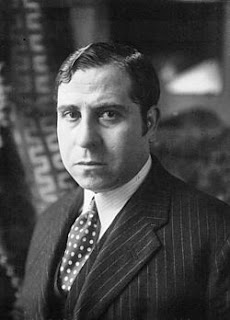A New Phonetic English Orthography
One of the most difficult things of the English language is without doubt its messy orthography. For foreign speakers like me, knowing how to pronounce a word just by its spelling is usually not very easy, and even for many native speakers learning how to spell words is one of the most difficult tasks that they have to undertake in their education.
So I came up with the idea of creating a new phonetic English orthography. We do have already the International Phonetic Alphabet (IPA), a very useful tool for foreign language students which represents the sounds of all languages in the world. But in contrast to the IPA, this new phonetic orthography that I propose needs less new symbols and relies mainly on the traditional Latin alphabet, adding diacritics to some letters to change their pronunciation and incorporating only two new symbols from the Islandic alphabet and Old English.
So, ladies and gentlemen, I introduce to you the new English Alphabet:
Aa, Ââ, Ää, Bb, Cc, Dd, Ðð, Ee, Êê, Ff, Gg, Hh, Ii, Îî, Jj, Kk, Ll, Mm, Nn, Ńń, Oo, Ôô, Pp, (Qq), Rr, Ss, Šš, Tt, Þþ, Uu, Ûû, Vv, Ww, (Xx), Yy, Zz, Žž.
Now we have 24 consonants and 11 vowels to represent all the sounds of the English language. Qq and Xx are no longer necessary, though the latter could be used by the Scottish to represent the sound "ch" in words like loch > lox.
For the diphthongs - combinations of two vowel sounds - we'll use the sequences ai, au, ei, oi, ou.
The pronunciation of each letter/sequence is showed below:
Pronunciation New Orthography transcription
Vowels
Aa sand, dance sand, dans
Ââ father, star fâðer, stâr
Ää * hot, lot hät, lät
Ee again, her egên, her
Êê bed, hair, earth bêd, hêr, êrþ
Ii kiss, kick kis, kik
îì mean, beer mîn, bîr
Oo love, blood lov, blod
Ôô * cloth, force klôþ, fôrs
Uu foot, put, sure fut, put, šûr (also šôr/šêr)
Ûû moon, blue mûn, blû
* Ää stands for the British pronunciation. It would be replaced by Ââ or Ôô in the American and Australian pronunciations.
* Ôô is replaced by Ââ in some American pronunciations.
*Digraph alternatives: â:ah, ä:ao, ê:ea, ì:ee, ô:oh, û:oo
Diphtongs
ai I, mine, aisle ai, main, ail
au cloud, owl klaud, aul
ei table, neighbor teibel, neiber
oi boy, noise, boi, noiz
ou over, soul ouver, soul
Consonants
Bb babe beib
Cc check cêk
Ðð father fâðer
Ff fly flai
Gg give giv
Hh have hav
Jj juice jûs
Kk cake keik
Ll line lain
Mm music myuzik
Nn nose nouz
Ńń think, going þińk, gouiń
Cc check cêk
Ðð father fâðer
Ff fly flai
Gg give giv
Hh have hav
Jj juice jûs
Kk cake keik
Ll line lain
Mm music myuzik
Nn nose nouz
Ńń think, going þińk, gouiń
Pp pet pêt
Rr rose rouz
Ss soup sûp
Šš shine šain
Tt take teik
Þþ thumb þom
Vv vanilla venile
Zz zebra zîbre
Žž pleasure plêžer
Rr rose rouz
Ss soup sûp
Šš shine šain
Tt take teik
Þþ thumb þom
Vv vanilla venile
Zz zebra zîbre
Žž pleasure plêžer
Semi-consonants
Ww way, sweet wei, swît
Yy you, muse yû, myûz
*Digraph alternatives: ð:dh, c:ch, ń:ng/nk, š:sh, þ:th, ž:zh.
Sample text
Now here is a sample text in the new orthography; the first two articles of the Universal Human Rights Declaration.
Ârtikel 1
Ôl hyumen biîńs âr bôrn frî and îkwel in digniti and raits. Ðei âr indaud wiþ rîzen and kânšens and šud akt tuwôrdz îc oðer in e spirit ov brôðerhud.
Ârtikel 2
Êvrîwon iz entaiteld tû ôl ðe raits and frîdemz sêt fôrþ in ðis Dêklereišen wiþaut distinkšen ov êni kaind, soc az reis, koler, sêks, lańgwij, relijen, pelitikel ôr oðer epinyen, našenel ôr soušel ôrijin, prâperti, bêrþ ôr oðer states. Fêrðermôr, nou distinkšen šal bî meid on ðe beisis ov ðe pelitikel, jurisdikšenel ôr intêrnašenel states ov ðe kontrî ôr têriteri tû wic e pêrsen bilôńz, weðer it bî indipêndent trost, non-sêlf governiń ôr onder êni oðer limiteišen ov sâvrinti.
It'l bî nais tû trai tû rait laik ðis sou Ińgliš wud bî môr îzî fôr êvrîwon!
Houp yû laik it! Sî ye! ;)
Ferdinandus


Comentarios
Publicar un comentario